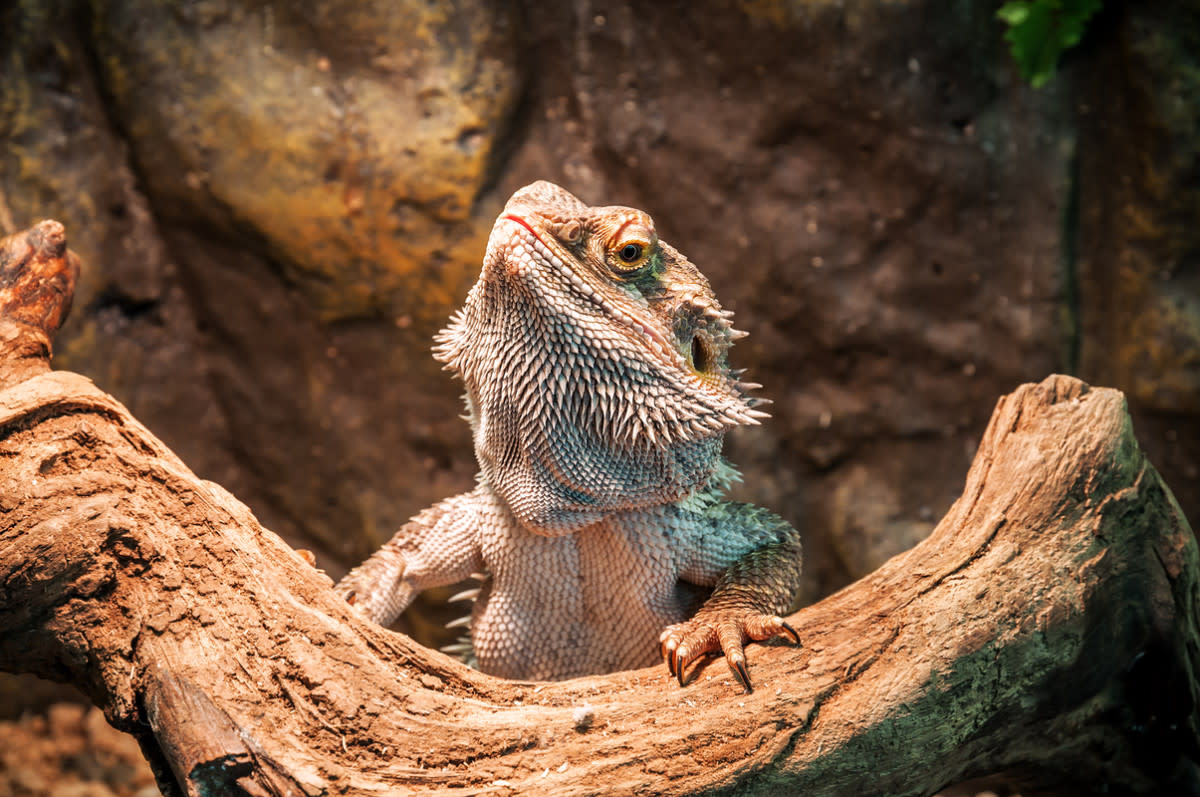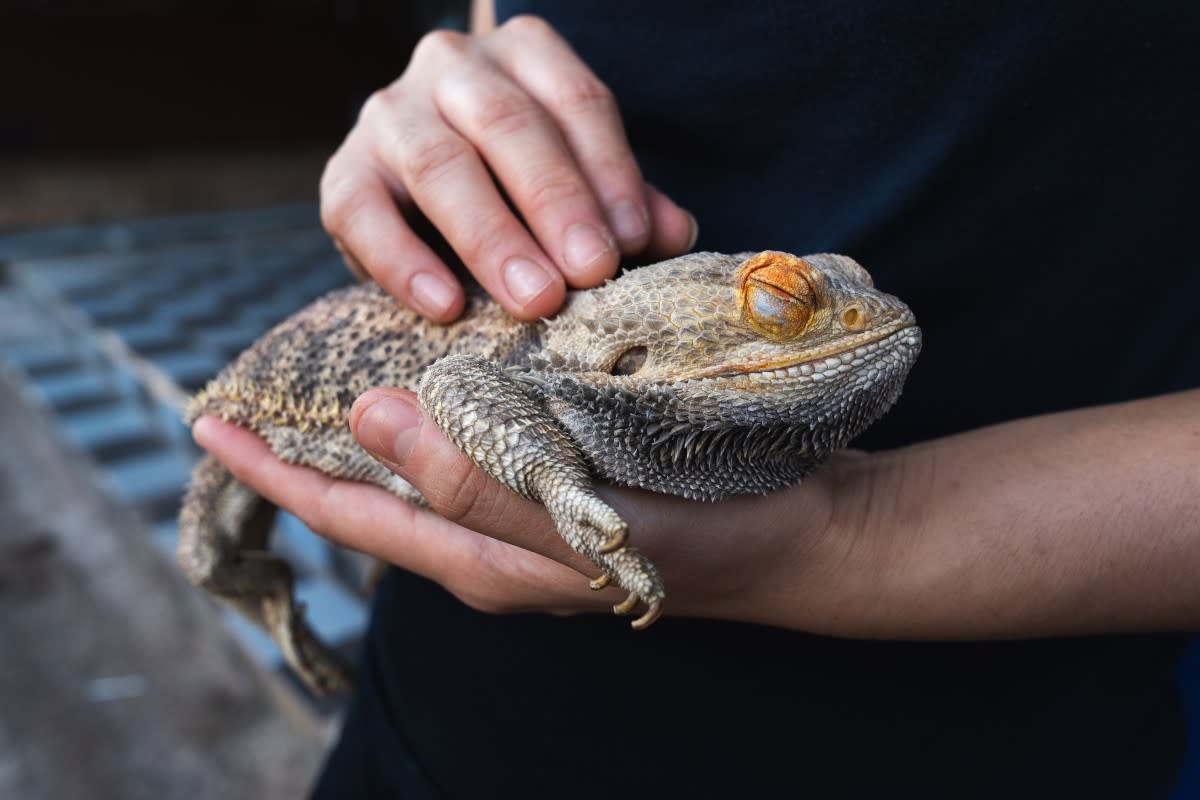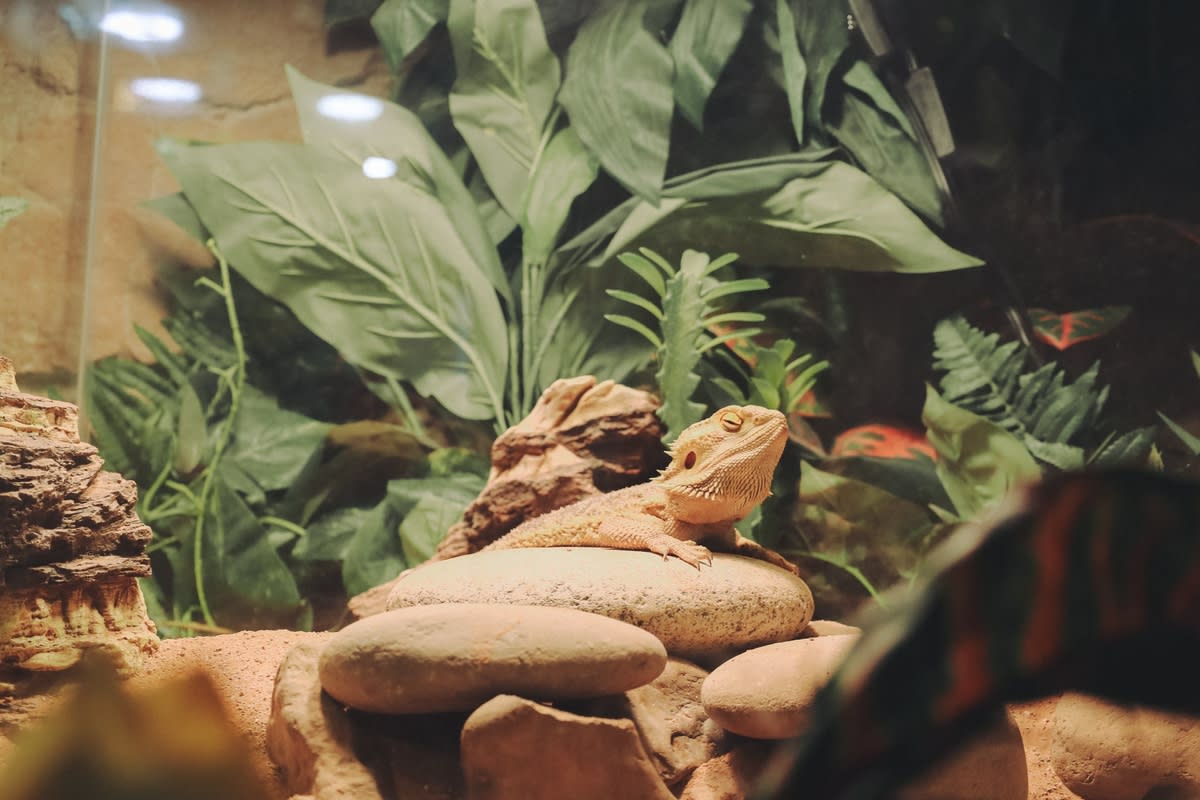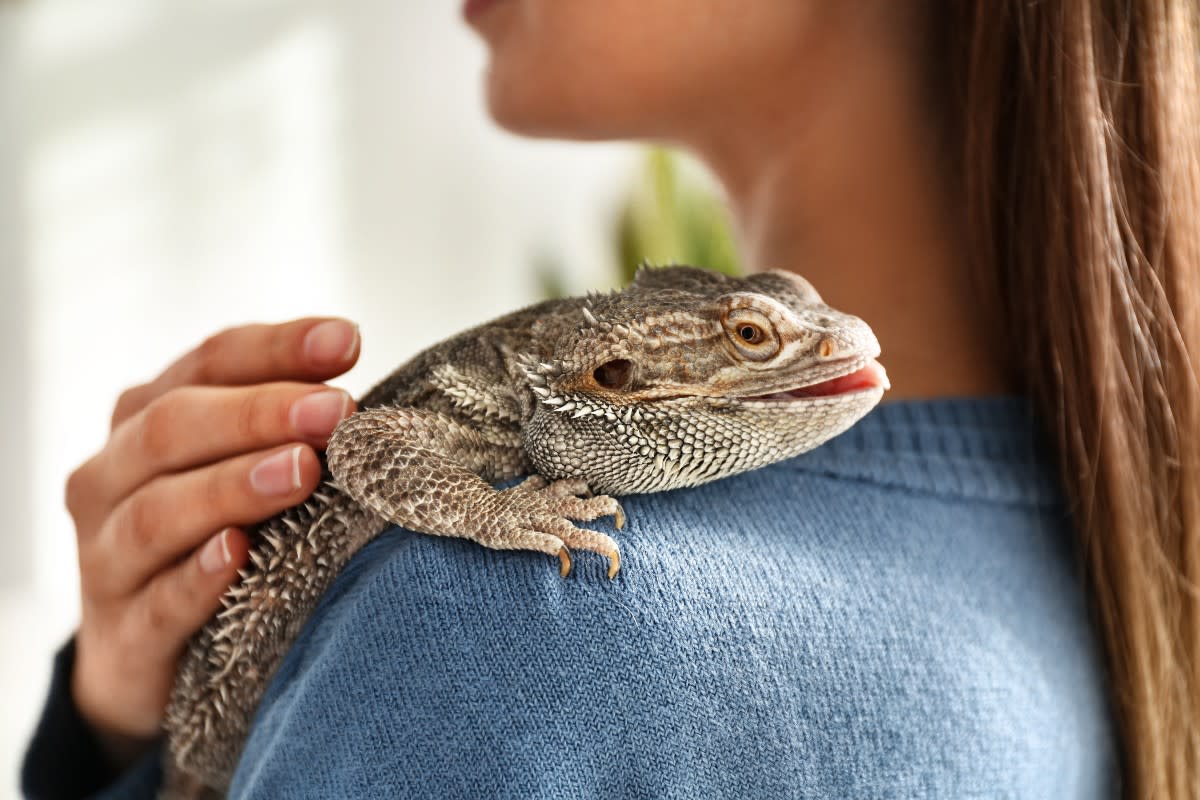Do Bearded Dragons Make Good Pets? Here's What Experts Say

Vova Shevchuk via Shutterstock
First-time reptile owners might find the jump from furry friends to scaly sidekicks intimidating, but I say it's all about finding the right reptile for you. One scaly pet that's widely beloved by herpetoculturists (reptile owners) is the bearded dragon, a spiky lizard from Australia that's renowned for its surprisingly sociable personality, at least by reptile standards. These friendly lizards are one of the most popular exotic pet species in the world, and they can be found in pet stores all over the country. But do they actually make good pets? Well, long story short, yes, but as with any potential pet, there are a few things new owners should consider first.
What Makes Bearded Dragons Such Great Pets?
Before we dive into potential caveats, let's talk about what makes the bearded dragon such a popular exotic pet in the first place!

CardIrin via Shutterstock
Their Winning Personalities
Unlike the vast majority of reptiles, who are more or less indifferent to their owners outside of feeding times, beardies have surprisingly sociable personalities on the whole (though, of course, every dragon's personality is unique). According to Long Island Birds and Exotics Veterinary Clinic, bearded dragons are "the only known reptile to show affection for their human companions." While I'm sure some hardcore herpetoculturists would argue to the contrary, it's clear that beardies are a rare breed when it comes to their chummy personalities!
When treated well, bearded dragons have been known to act excited when their owners approach their cages, ride around on their owners shoulders, sleep on them, and even nuzzle their hands! Beardies' gentle, docile, and friendly demeanors have turned many former lizard loathers into lizard lovers, and they can even make great pets for school-aged kids (with proper care and maintenance, of course)!
Their Curious Characters
In addition to their friendly, docile personalities, beardies are naturally very active and inquisitive. They thrive with lots of enrichment in their enclosures, and many of them like spending short daily excursions roaming and exploring outside of their terrariums as well. Some bearded dragons even like going on brief outdoor walks with their owners, although they should be equipped with a leash and harness to prevent their escape. Pet Assure has a great guide on how to leash train your beardie without stressing it out!
Their Overall Hardiness
By reptile standards, beardies are fairly low-maintenance critters when treated well, making them great pets for pet owners who are just entering the reptile raising world. According to PetMD, the average bearded dragon lives 8-10 years in captivity (though the oldest ever recorded lived to be 18). They are easy-going, alert, and hardy animals when given proper care - and we'll get into the nitty-gritty details of their care in a moment.
Related: Bearded Dragon Going For a Swim With His Human Mom Is Stopping People in Their Tracks
What Prospective Beardie Parents Need to Know
So far, so good! Before you go in on buying a beardie, though, there are a few caveats you need to be aware of first.

Cavan-Images via Shutterstock
Their Habitats Are Large and Expensive
Again, beardies are low-maintenance animals by reptile standards, but they still require a lot of thoughtful care and planning when it comes to their habitats. Your beardie can grow to be around two feet long, and it needs a lot of elbow room! According to PetMD, a 75-gallon terrarium tank is the minimal size advisable for an adult beardie, though ideally the tank should measure at least three times your lizard's snout-to-tail length. Your terrarium will also need a screened lid for ventilation and to maintain proper humidity.
And the tank is only the start! You'll also need to maintain the right ambient temperatures in the tank (80-88 F in the day, 70-75 F at night) with a basking spot at one end measuring between 95-105 F. Your terrarium also needs UVB lighting, as beardies require UVB light in order to not develop deadly bone deformities. Then, you'll need an appropriate substrate for your beardie to play on, a big shallow water dish it can drink from and cool off in, a burrow or two to hide in, and plenty of rocks, branches, and artificial plants for your beardie to climb on and get enrichment from.
There's a lot to cover, and it can get quite expensive. Once your beardie's terrarium is built, it's not hard to clean and maintain, but covering all the essentials is - well, essential. PetMD's bearded dragon care guide (linked above) includes detailed habitat info to help you ensure your homemade terrarium meets your beardie's needs!
They Eat a Fresh Daily Diet
Unlike snakes, which can go weeks or even months without eating, your adult beardie needs to eat once or twice a day. A beardie's daily diet is primarily comprised of fresh vegetables and some fruits, along with a side serving of live bugs like meal worms, crickets, and cockroaches... yum. Gotta get that animal protein!
According to Falls Road Animal Hospital, baby beardies typically eat a ratio of 80% bugs to 20% plants (though they warn that baby beardies may be reluctant to eat their veggies when they're young, just like human children). As the beardies become adults, that ratio flips to 80% plants and 20% bugs. Falls Road's guide includes a full breakdown of what bugs, veggies, and fruits your beardie can eat, along with how you should feed it every day to keep it healthy and happy!
They Carry Dangerous Bacteria
Your bearded dragon might not try to intentionally harm you, but it could make you sick. Bearded dragons, like many other reptiles, can carry the dangerous salmonella bacteria, a bacteria most commonly associated with food poisoning.
According to the CDC, at least 15 salmonella illnesses have been directly linked to pet bearded dragons, though thankfully none so far have been fatal. Even healthy-looking dragons can carry salmonella germs in their droppings, so always handle them with caution. Always wash your hands after playing with your beardie or cleaning its cage (especially if you're spot-cleaning its feces), keep it out of the kitchen, and don't kiss it - yes, even when it's being cute. The CDC also advises against keeping a pet bearded dragon (or any reptile) for children five and younger, adults aged 65 and older, and people with compromised immune systems.

New Africa via Shutterstock
To Beardie or Not To Beardie?
Experts and reptile lovers seem to agree that, on the whole, bearded dragons make superb pets thanks to their affectionate, active personalities and generally hardy temperaments. Obviously, every lizard is different, and healthy engagement and socialization are crucial for making your beardie comfortable around you, but you can generally count on bearded dragons to be docile, easy-going pets!
That said, bearded dragons aren't the right pets for everyone. Their large, complex enclosures and daily diets of fresh veggies and bugs can prove expensive, and the dangerous bacteria they carry can pose a threat to pet owners with weak immune systems. As with any animal, prospective pet owners should do their research carefully first to ensure that they can give a beautiful beardie the loving, healthy, and happy home it deserves!
Looking for more PetHelpful updates? Follow us on YouTube for more entertaining videos. Or, share your own adorable pet by submitting a video, and sign up for our newsletter for the latest pet updates and tips.


